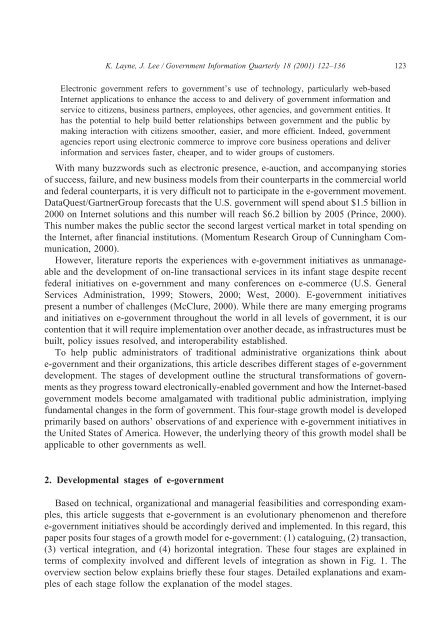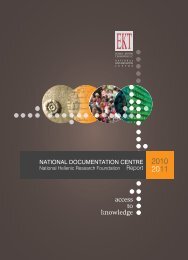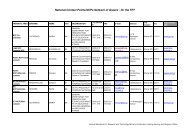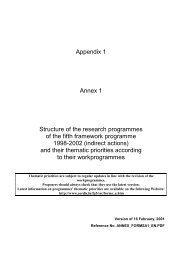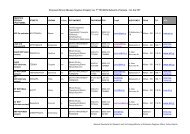Government Information Quarterly; 18 (2) 2001, p.122-36.pdf
Government Information Quarterly; 18 (2) 2001, p.122-36.pdf
Government Information Quarterly; 18 (2) 2001, p.122-36.pdf
- No tags were found...
You also want an ePaper? Increase the reach of your titles
YUMPU automatically turns print PDFs into web optimized ePapers that Google loves.
K. Layne, J. Lee / <strong>Government</strong> <strong>Information</strong> <strong>Quarterly</strong> <strong>18</strong> (<strong>2001</strong>) 122–136123Electronic government refers to government’s use of technology, particularly web-basedInternet applications to enhance the access to and delivery of government information andservice to citizens, business partners, employees, other agencies, and government entities. Ithas the potential to help build better relationships between government and the public bymaking interaction with citizens smoother, easier, and more efficient. Indeed, governmentagencies report using electronic commerce to improve core business operations and deliverinformation and services faster, cheaper, and to wider groups of customers.With many buzzwords such as electronic presence, e-auction, and accompanying storiesof success, failure, and new business models from their counterparts in the commercial worldand federal counterparts, it is very difficult not to participate in the e-government movement.DataQuest/GartnerGroup forecasts that the U.S. government will spend about $1.5 billion in2000 on Internet solutions and this number will reach $6.2 billion by 2005 (Prince, 2000).This number makes the public sector the second largest vertical market in total spending onthe Internet, after financial institutions. (Momentum Research Group of Cunningham Communication,2000).However, literature reports the experiences with e-government initiatives as unmanageableand the development of on-line transactional services in its infant stage despite recentfederal initiatives on e-government and many conferences on e-commerce (U.S. GeneralServices Administration, 1999; Stowers, 2000; West, 2000). E-government initiativespresent a number of challenges (McClure, 2000). While there are many emerging programsand initiatives on e-government throughout the world in all levels of government, it is ourcontention that it will require implementation over another decade, as infrastructures must bebuilt, policy issues resolved, and interoperability established.To help public administrators of traditional administrative organizations think aboute-government and their organizations, this article describes different stages of e-governmentdevelopment. The stages of development outline the structural transformations of governmentsas they progress toward electronically-enabled government and how the Internet-basedgovernment models become amalgamated with traditional public administration, implyingfundamental changes in the form of government. This four-stage growth model is developedprimarily based on authors’ observations of and experience with e-government initiatives inthe United States of America. However, the underlying theory of this growth model shall beapplicable to other governments as well.2. Developmental stages of e-governmentBased on technical, organizational and managerial feasibilities and corresponding examples,this article suggests that e-government is an evolutionary phenomenon and thereforee-government initiatives should be accordingly derived and implemented. In this regard, thispaper posits four stages of a growth model for e-government: (1) cataloguing, (2) transaction,(3) vertical integration, and (4) horizontal integration. These four stages are explained interms of complexity involved and different levels of integration as shown in Fig. 1. Theoverview section below explains briefly these four stages. Detailed explanations and examplesof each stage follow the explanation of the model stages.


